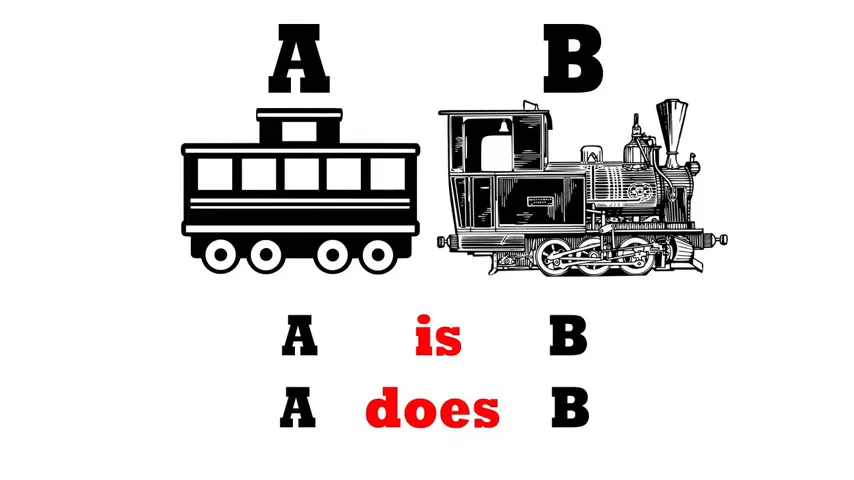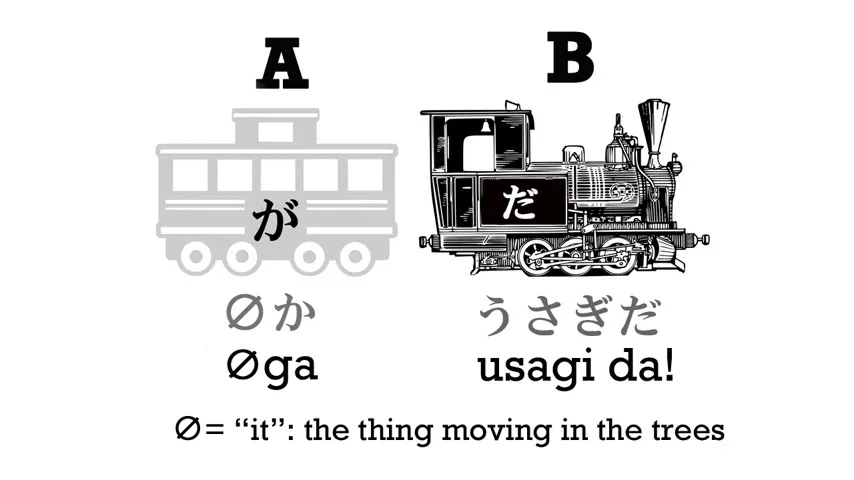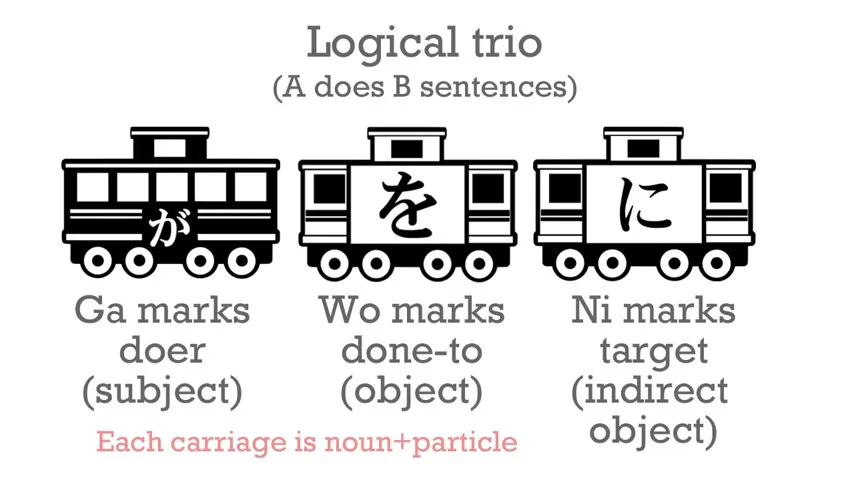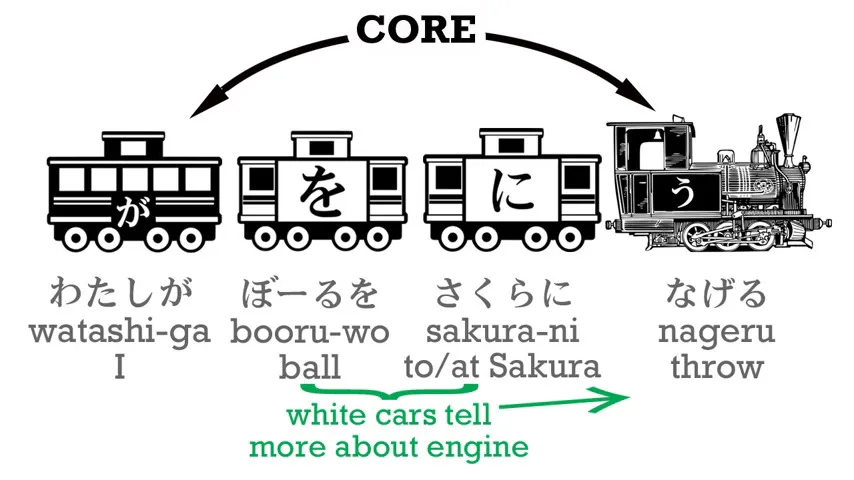Learning JP #03 - Cure Dolly & structure
I was wrong about what I was supposed to do today, I didn't set up Anki, that's tomorrow.
What I did today was meet Cure Dolly! I've always heard good things about her and her Japanese from scratch playlist, but today... I saw it with my own two eyes, she is great at explaining things! She follows this idea that we should explain languages following that language's structure, not trying to compare it to other languages, because it's not gonna make it clearer, it's gonna complicate everything.
Today I watched 3 videos, which is how much I have to watch everyday from now on. It seems like a good daily amount, it's gonna take anywhere from 25-45 minutes to watch the videos, plus however long you spend taking notes.
The first video is an introduction to the structure of a Japanese sentence, and how we can compare it to the structure of a train, which has a main carriage (A) and a locomotive/engine (B), and it's always about either "is" or "does".

The main carriage carries "が(ga)", while the engine which sets things in motion can carry: an added "だ(da)" for a noun, a word that ends in "い(i)" for an adjective, or a word that ends in "う(u)" for a verb.

Some examples, using a bird and romaji for simplicity, would be:
Noun, adding "だ(da)" to the main carriage.
Tori ga nihonjin da (A bird is a Japanese person)
Adjective, a word that ends in "い(i)"
Tori ga aoi (A bird is blue)
Verb, a word that ends in "う(u)"
Tori ga utau (A bird sings)
We also talked about how there could be "invisible" main carriages, if you have context. For example, if a thing moving in the trees gets your and your friend's attention, you can simply tell him "Usagi da!!" (is a rabbit), no need to tell him that IT is a rabbit.

After that, she taught us 2 other carriages, which are optional to sentences, and are for added context.
The first one is the "を(wo)" carriage, which indicates "done-to" or object. For an example, following the same recipe as before, bird and romaji:
Tori ga taberu (A bird eats)
And adding the "を(wo)" carriage
Tori ga keeki wo taberu (A bird eats cake)
We just explained that the bird is doing the eating to a cake!!1

We also learned about the "に(ni)" carriage, which would be "the target" or indirect object. For this one I'll completely skip my example and use Cure Dolly's great example:

I (が/ga carriage) am throwing (う/u/verb engine) a ball (を/wo doing the throwing to) to sakura (に/ni target of action).
We also talked about "は(wa)"2, and how it's a flag, not a carriage, and gives context to a sentence, rather than being part of it. Saying the classic "Watashi wa" is not saying "I am", but rather "As for me". With more context:
Watashi wa amerikahito → As for me, I am an American
I still have a couple of questions regarding "は(wa)", but time will help me answer them!
Regarding my daily 10-minute Kana practice: I scored 105/125. I'm still averaging 20 wrong, and it's all the Katakana that I keep mixing up!